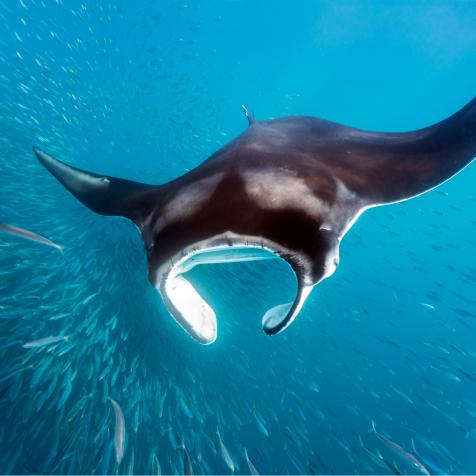
NurPhoto
How the Mediterranean Became a Corridor of Death for Birds
Across the world, the bird population is thinning due to illegal poaching and habitat loss, especially in Europe and Africa during migratory seasons. Conservation groups globally are trying to protect our nearly extinct feathered creatures.
Up to 25 million birds are illegally slaughtered in the Mediterranean each year as they attempt their perilous migratory journey between Africa and Europe. Endangered species, already brought to the brink by climate change and habitat loss, are being edged ever closer towards extinction. Now, birding conservation groups are coming together in an attempt to clamp down on the illegal poaching, and protect the feathered creatures.
Around 25 globally threatened species make their way through the Mediterranean every year to fly to warmer breeding climes, when they are trapped in glue, squeezed to death, or entangled in nets.
One non-profit in particular, BirdLife International, has been working to end the illegal killing of these birds, through education as well as ensuring responsible and sustainable hunting practices where hunting does take place.
“Populations of some species that were once abundant in Europe are declining, with a number even in freefall and disappearing altogether,” said BirdLife’s chief executive Patricia Zurita.

DE AGOSTINI PICTURE LIBRARY
Egypt is the worst offender, with 5.7M birds killed a year, with Italy a close second at 5.6M birds being killed annually. BirdLife’s project has been running since 2012 and has been instrumental in coordinating a network of 20 NGOs that share expertise along the African-Eurasian route. The network works with locals and governments, including in Croatia, Montenegro, and Turkey. The rock partridge, designated a “near-threatened species” according to the IUCN Red List, has been one of the species which have benefited from BirdLife’s efforts. It can be legally hunted in Montenegro between October and December, and organizations can issue hunting permits for specific areas. However, according to BirdLife, there is no cooperation between government departments, and this is not well regulated.
However, there have been other successes; following the joint efforts of the customs authority and NGOs via a campaign against illegal killing of birds, the Croatian minister announced a three year moratorium on the hunting of the rock partridge species. Some hunting associations have even taken the independent decision to ban hunting of the bird.

DEA / P. BRICHETTI
In Turkey, the sociable lapwing is classified as critically endangered, thanks to its European population, which experts say number no more than 10 pairs. Globally, there are only around 5,600 pairs left.
The birds breed in Kazakhstan and neighboring Russia and migrate through Turkey to their winter homes. BirdLife’s Turkish branch, Doğa Dernegi has been working in the Ceylanpınar IBA region, one of the most important stopover sites of the species, for over five years to tackle one of the most important threats that Sociable Lapwing face: illegal killing. Doğa has organized a team of volunteer wardens from local conservation groups (LCGs) at the site to monitor illegal killing activities.
Thanks to the wardens, illegal killings of the birds has dramatically decreased, while a “no hunting zone” was been declared in the area in 2016.
Although BirdLife and its partners have made progress in protecting numerous bird species, there is still much more work to be done. “If we are to effectively conserve species we need to work together,” Zurita added.


















